Morpathia history article: Downing 1
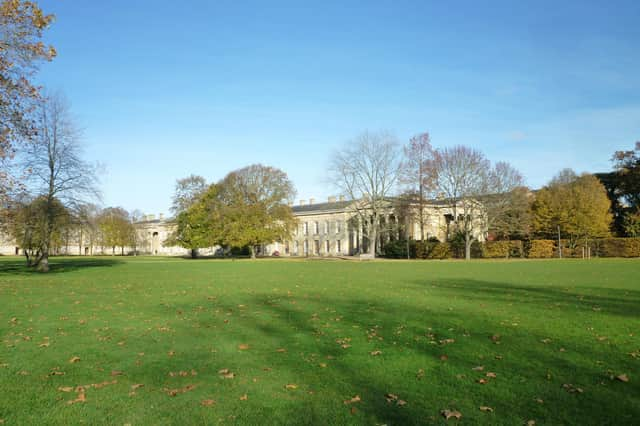

It’s quite unlike any other old Oxbridge college with their quadrangles and Gothic architecture, both original and Victorian. It consists instead of a vast prairie surrounded on three sides by rigorously classical buildings. Even the library, built as recently as 1993, is purely classical.
I went into a small courtyard, once a stable yard. The stables are now an art gallery, but it still has the feel of a back yard. There I found a plaque to Sir George Downing, first baronet, who was an MP for Morpeth for 25 years until his death in 1684.
Advertisement
Hide AdAdvertisement
Hide AdIts position is telling. It isn’t on one of the main faces of the college. It isn’t even on the outer wall of the little yard, but on the inside, facing inwards, as if the authorities were a bit ashamed of it.
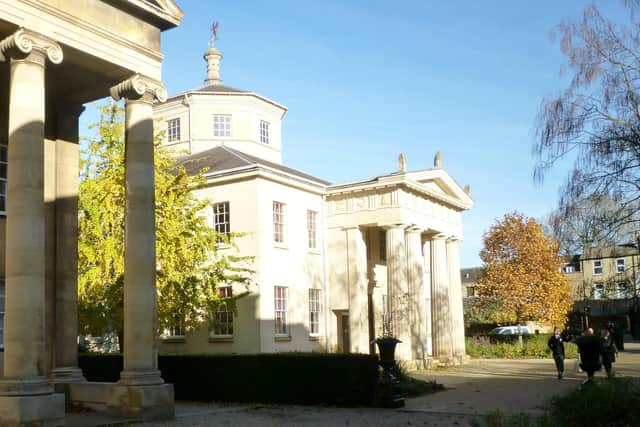

If so, they had good reason. Everything the plaque says is true, including that “By dint of his personality, diligence and industry came the fortune of this foundation”.
By his personality? Yes. He was at once an outstandingly clever man and a ruthless self-seeker who betrayed his friends to their deaths.
George Downing was born in Dublin in 1623, but brought up in England. The family were Puritans. His father, Emanuel Downing, was a barrister; his mother, Lucy Winthrop, was sister to John Winthrop, Governor of the Colony of Massachusetts Bay.
Advertisement
Hide AdAdvertisement
Hide AdIn 1638, they emigrated to Massachusetts where he entered the newly founded Harvard College. He graduated in 1642, went to sea as a preacher on board a merchant ship (which amongst other things carried slaves) and in 1645 returned to England where he became chaplain to Colonel John Okey’s regiment.
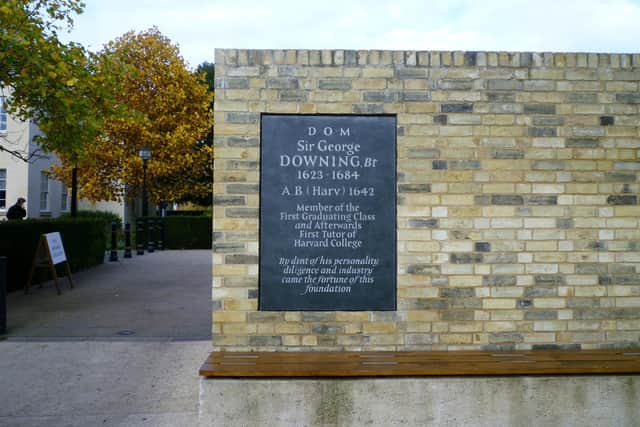

He came to the notice of Cromwell himself and in 1649 became Scoutmaster-General in Scotland. His job was espionage, managing both spies and informers.
He fought at the battle of Dunbar in 1650 when Cromwell defeated a stronger Scottish force, receiving three wounds to his arm. A year later he was present at the battle of Worcester, the last of the Civil War, after which Charles II went into exile.
Downing wrote the same evening from “Near Worcester, Sept. 3 1651; nine at night”, to an unidentified nobleman:
Advertisement
Hide AdAdvertisement
Hide Ad“May it please your Lordship, – The Lord is still triumphing. This day last year was the great appearance at Dunbar, and this day again the Lord hath disposed for such a work. ... Truly our work is all wonders. I can inform your lordship but little what is done, only that, so far as my eyes could on the hurry take up, there are more slain than at Dunbar … Captain Howard is wounded; major-general Lambert’s horse shot.
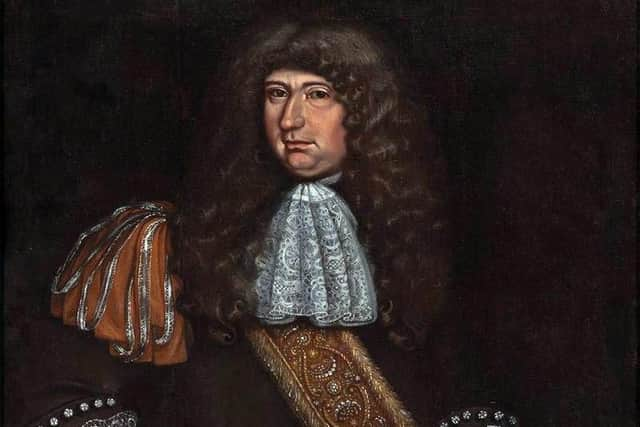

“Your lordship will, I hope, pardon my hasty scribbling. We long for the appearance of the day; when we also look for the Lord’s further approvance.
“I am, My Lord, Your lordship’s most humble servant, G. Downing.”
The conspicuous piety of Downing’s letter was normal practice throughout the New Model Army. Everybody, from Oliver Cromwell down to the lowliest trooper, thought and spoke the same way. If not, you were in trouble.
Advertisement
Hide AdAdvertisement
Hide AdTwo other observers, Thomas Scott and R. Salway, wrote that, “captain Howard of Naward, captain to the life guards to his excellency, has received divers sore wounds … Captain Howard did interpose very happily at a place of much danger, where he gave the enemy (though with his personal smarts) a very seasonable check, when our foot, for want of horse, were hard put to it.”
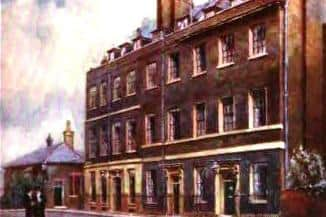

Howard’s regiment was the Lifeguards, the life to be preserved being Cromwell’s, so that he was, like Downing, close to the great leader. Their friendship probably dates from this time.
Conspicuous piety was even more necessary for Charles Howard than for other officers and men. He was the son of Sir William Howard of Naworth, had been brought up a Roman Catholic and was suspected of being a Royalist. He nevertheless persuaded Cromwell that he was loyal to parliament and became a Presbyterian.
By the time of the battle of Worcester, he had gone even further and joined a radical sect of Puritans in St. Pancras. After the Restoration, however, Howard reverted to a moderate Anglicanism.
Advertisement
Hide AdAdvertisement
Hide AdIn April 1653, Cromwell ejected the Rump – all that was left of the Long Parliament after the Presbyterians and moderates had been excluded. It was followed by four so-called parliaments, the first being known as Barebone’s Parliament.
They were in effect nominated assemblies of people deemed sufficiently loyal and godly. The last was summoned by Cromwell’s son, Richard, in 1659. George Downing sat in the last three, once for Edinburgh and twice for Carlisle.
By this time, he was gaining steadily in wealth and influence. In 1654 he married Lady Frances, sister of Charles Howard of Naworth. A Narrative of the Late Parliament, 1657, has “George Downing as Scoutmaster-General, £365 per Annum; one of the Tellers in the Exchequer, £500; in all £865 per Annum. It’s said he hath the Captain’s pay of a troop of horse.”
Also in 1657, Downing was appointed ambassador to Holland at a salary of £1,000. Sibley’s Harvard Graduates, quoting C.W. Upham, says, “He held a constant correspondence with all the Courts of Europe, … It may be said, with almost literal truth, that by his agents, correspondents, servants, and spies, he was everywhere present.
Advertisement
Hide AdAdvertisement
Hide Ad“Not a ship arrived or sailed from a port in Europe that he did not communicate to Cromwell … He watched the course of Charles Stuart and other members of the exiled family, tracked their agents and adherents from court to court and kept a list of their correspondents on the Continent and in England.”
Oliver Cromwell died in 1658 and the Commonwealth descended into chaos. On January 2nd, 1660, General Monck crossed the River Tweed at Coldstream and began his march to London to restore order. This from Hodgson’s History of Morpeth:
“1660. – Jan. 4, this day general Monck was attended at Morpeth by the sword-bearer of London, with an express of letters from the corporation of London. There came also the sword-bearer of Newcastle, with compliments and a kind invitation from that town.”
So for a couple of days in January 1660, the people of Morpeth had the excitement of seeing 10 regiments of the New Model Army in all their glory, marching through the town in good order, without haste, over the old bridge and on towards Newcastle and London.
Advertisement
Hide AdAdvertisement
Hide AdIn April 1660, when Charles II left Brussels for Breda in Holland, Downing was in exactly the right place at the right time. He made his peace with the King through his brother-in-law, Thomas Howard, revealing to him the contents of an encoded despatch from his chief, Secretary Thurloe, and in the same month was elected to represent Morpeth in the Convention Parliament which restored the monarchy.
Charles duly rewarded him with a knighthood, continued him in his tellership and embassy, and awarded him the land where Downing Street now stands.